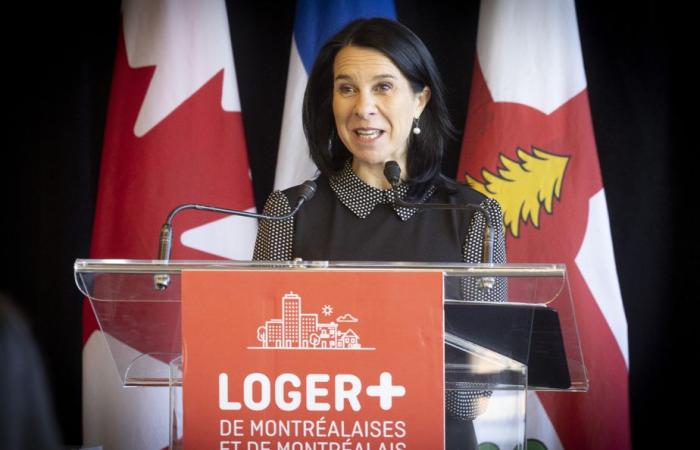Montreal wants to build 160,000 “off-market” housing units that avoid real estate speculation by 2050, by simplifying the sale of its land to non-profit organizations (NPOs). They will now be able to purchase sites from the City via a real-time map, where there are already 67 sites.
Posted at 11:23 a.m.
“Government funding models have changed in recent years. I am thinking of Accès Logis, which no longer exists. The market and the culture of development have also changed a lot,” argued Mayor Valérie Plante at a press conference on Tuesday.
Vacant land, parking lots, buildings to be demolished or transformed, rooming houses and small residential buildings: several types of projects will be displayed on this new platform. There were already 12 “available buildings” there on Tuesday, representing between 900 and 1,150 housing units, in Ville-Marie, Le Plateau-Mont-Royal, Le Sud-Ouest, Parc-Extension and Villeray.
The price, field information and eligible financing programs are then displayed. “We will continually add new land, new buildings. […] We now have a tool that has great potential,” indicated the head of housing on the executive committee, Benoit Dorais. He says he wants to “simplify the conditions for carrying out off-market projects”.
Already 27 sites have been identified as “projects in planning”, for a total of up to 3,400 homes. The City claims to have sold 18 off-market sites since 2018, for 1,000 housing units; 20 others are “under analysis”, for around 950 housing units.
Taking into account eight smaller projects with 20 housing units or less, which will not be displayed on this map, this means that 67 projects are either available, under development, or under analysis.
Sale or rental
The City’s objective is to achieve a proportion of 20% “non-market” housing on the island by 2050, which represents 224,000 housing units. In the shorter term, the City aims to reach an overall threshold of 12% “non-market” housing within 10 years. Currently, this rate is only 7%, which is equivalent to 63,000 housing units. In short, the march is high, at 161,000 housing units in 25 years.
PHOTO PATRICK SANFAÇON, THE PRESS
Valérie Plante
We want to improve the economic viability of projects by being faster. We also want to reduce the significant delays between the granting of municipal authorizations and the completion of projects.
Valérie Plante, mayor of Montreal
Montreal only targets projects carried out by non-profit organizations (NPOs). This all comes in the wake of the Urban Planning and Mobility Plan (PUM), presented last June, which promises to deliver 200,000 more housing units by 2050, by combining with the development of public transport.
Read the article “Objective: 200,000 more homes by 2050”
Two options will be offered to interested organizations: either they buy the site, or they rent it through a transfer or a surface right. The City would then remain the owner, while allowing the NPO to carry out its project. For available sites, developers who have confirmation of financing will be able to submit an acquisition request directly on the City’s platform.
As for sites deemed “strategic because of their potential, their location or the complexity of their development”, they will be made available within the framework of calls for applications, through interactive mapping or by other traditional mechanisms.
Montreal says it wants to sell “at book value, without profit or loss”, most often with prices lower than market value. This will mainly involve land from the municipal land reserve or acquired by the Regulations for a mixed metropolis (RMM). Other sites more recently acquired through the right of first refusal may, however, have to be sold at a price closer to market value.
Several hectares
In the PUM 2050 unveiled last spring, the City of Montreal warned that it would make way for a new measure of densification, based on housing per hectare, with scales for a low, moderate or high densification zone. . From now on, a sector classified as first category will be able to build between 15 and 60 housing units per hectare, while a district considered “moderate” will be able to build between 60 and 200 housing units per hectare. Finally, at the highest levels of densification, we will be able to exceed more than 200 housing units per hectare. In the city center, for example, the densification zone will be “high”, but in more remote or heritage areas, it could be low or moderate.







